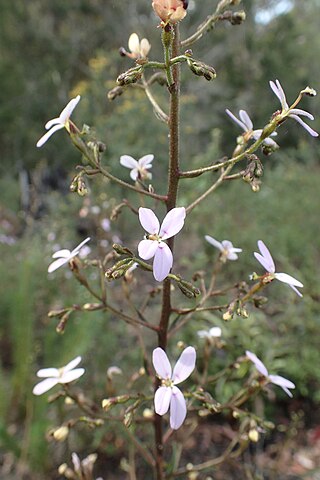
Stylidium laricifolium, commonly known as giant trigger-plant, larch-leaf or tree triggerplant, or is a species of flowering plant in the family Stylidiaceae and is endemic to eastern Australia. It is a perennial subshrub with many linear leaves crowded along its few stems, the flowers white to pale pink and arranged in a single main panicle and smaller racemes.

Swainsona galegifolia commonly known as smooth Darling pea, is a species of flowering plant in the family Fabaceae and is endemic to Australia. It is a small shrub with greyish-green leaves and flowers in white, red, pink, purple, yellow or orange.

Lobelia purpurascens, commonly known as white root or purplish pratia, is a flowering plant in the family Campanulaceae of eastern Australia. It is a small herbaceous, scrambling plant with white to pale pink flowers.

Prostanthera nivea, commonly known as snowy mint-bush, is a species of flowering plant in the family Lamiaceae and is endemic to eastern Australia. It is a shrub with linear to cylindrical leaves and white flowers arranged in leaf axils near the ends of branchlets and is one of the mint-bushes that is not aromatic.

Bossiaea buxifolia, commonly known as matted bossiaea, is a species of flowering plant in the family Fabaceae and is endemic to south-eastern Australia. It is a prostrate to weakly erect shrub with elliptic to egg-shaped or almost round leaves and yellow, red and purplish flowers.

Mirbelia rubiifolia, commonly known as heathy mirbelia, is a species of flowering plant in the family Fabaceae and is endemic to eastern Australia. It is a diffuse, spreading shrub with narrowly egg-shaped to linear, sharply-pointed leaves and clusters of pink to purple flowers.
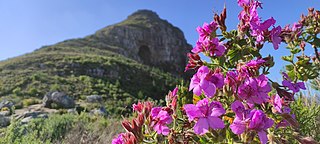
Pelargonium cucullatum is a hairy, upright, branching, perennial shrub, of 1–2 m (3.3–6.6 ft) high, that has been assigned to the cranesbill family. It sprouts new stems from the underground rootstock and becomes woody at its base. It has alternately set, sometimes slightly succulent leaves crowded near the top of the branches, with leaf stalks and flat to hood-shaped leaf blades, with a rounded broad triangular to kidney-shaped outline of about 4–5.5 cm long and 5–9 cm wide, often somewhat incised, the margin with irregular teeth. The white to purplish red, 5-merous, somewhat mirror symmetrical flowers grow in umbel-like clusters, and each contain mostly 7 fertile stamens and 3 infertile staminodes of different length. P. cucullatum has been cultivated as a garden ornamental and house plant since the 17th century. It has been used to breed many modern pelargonium hybrids, notably the Regal pelargoniums. It is called hooded-leaf pelargonium or herba althaea in English and wildemalva in Afrikaans.

Scaevola albida, commonly known as pale fan-flower or small-fruit fan-flower, is a flowering plant in the family Goodeniaceae. It is a spreading perennial herb with pale blue or white fan-shaped flowers and obovate leaves. It grows in Queensland through eastern New South Wales and coastal areas of Victoria and Tasmania.
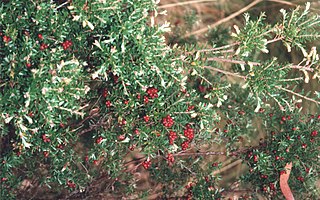
Acrothamnus hookeri, commonly known as the mountain beardheath, is a flowering plant in the family Ericaceae and grows in subalpine regions of southeastern Australia. It is a small upright shrub with oblong-shaped leaves and white flowers.
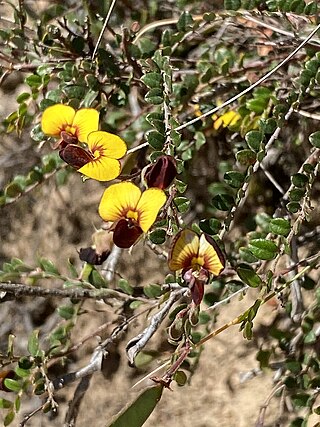
Bossiaea prostrata, commonly known as creeping bossiaea, is a prostrate understory shrub in the pea family, Fabaceae. It is a widespread species with orange-yellow flowers, purple-brown keels and trailing branches.

Pelargonium australe is a perennial herb that is endemic to Australia, and found in all states except the Northern Territory. Common names include native storksbill, wild geranium and austral storksbill. The species grows to 50 cm high and has leaves with 5 to 7 lobes. Umbels of 4 to 12 flowers appear between October and March in the species' native range. These are pink with darker markings.
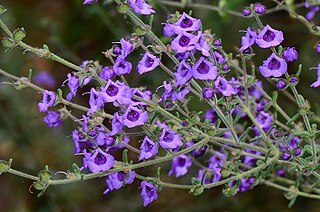
Prostanthera hirtula, commonly known as hairy mintbush, is a species of flowering plant in the family Lamiaceae and is endemic to the south-eastern continental Australia. It is a strongly aromatic, densely hairy, spreading shrub with narrow egg-shaped leaves and dark mauve flowers, and that grows in exposed, rocky sites.

Hovea longifolia commonly known as rusty pods, is a flowering plant in the family Fabaceae, endemic to eastern Australia. It has purple pea flowers, linear leaves with rusty felt like hairs on the lower surface.

Pimelea curviflora, also known as curved rice-flower, is a shrub in the family Thymelaeaceae and is endemic to Australia. It is a small, hairy shrub with greenish-yellow or red tubular flowers.
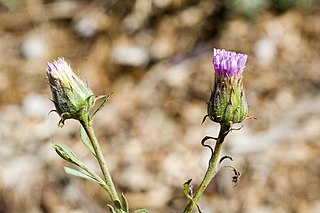
Streptoglossa liatroides is a species of flowering plant in the family Asteraceae. It is a low, spreading or upright perennial herb with pink or red to purple flowers. It grows in South Australia, New South Wales, Western Australia and the Northern Territory.
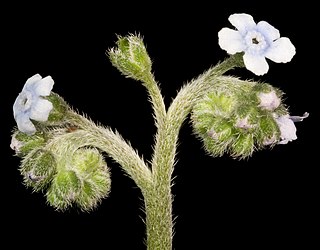
Cynoglossum australe commonly known as Australian hound's tongue, is a flowering plant in the family Boraginaceae. It is a perennial herb with blue, pink or whitish flowers and found in most states of Australia.
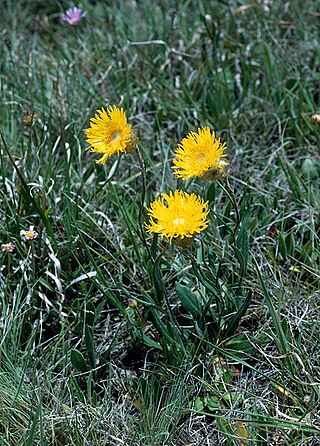
Podolepis decipiens, commonly known as deceiving copperwire-daisy, is a flowering plant in the family Asteraceae and grows in Victoria, Tasmania and New South Wales. It is an upright, perennial herb with yellow daisy-like flowers on a single stem rising from a sparse rosette.

Ranunculus pimpinellifolius, commonly known as bog buttercup, is a flowering plant in the family Ranunculaceae and grows in eastern Australia. It is a low growing perennial with divided green leaves and yellow flowers.

Comesperma retusum, commonly known as milkwort, is a slender herb in the family Polygalaceae. It is an upright shrub with purple or mauve-pink pea-like flowers and grows in eastern Australia.
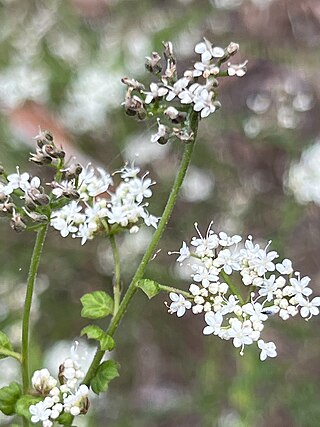
Platysace clelandii, is a flowering plant in the family Apiaceae and is endemic to New South Wales. It is small shrub with fan-shaped leaves and white flowers.




















